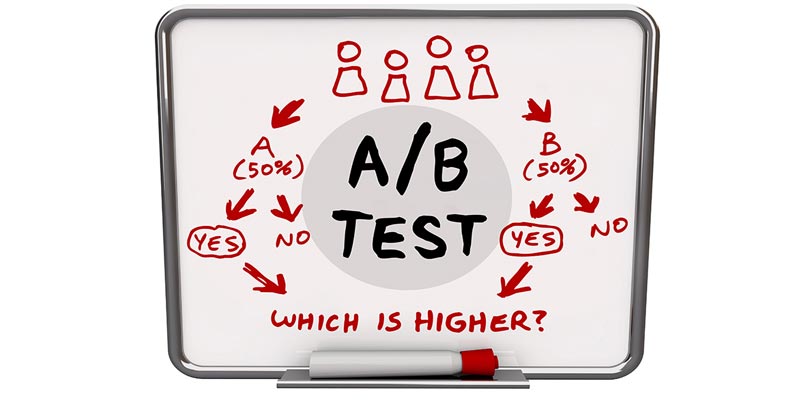A/B testing is the marketing version of natural selection, the survival of the fittest. Using A/B Testing, one sports apparel company increased their customer registration by 33% just by removing several customization options on their website.
Basically A/B testing is when a base email is written and then sent out in two slightly different versions. Customers’ responses to each email are tracked to see which one has the best effect.
Of course this helps focus your outreach on more effective and powerful solutions to maximize the value and impact of your emails, but it doesn’t just stop there.
Focus on what your customers want
A/B testing ensures that your marketing approach will ALWAYS stay focused on what your customers want and how they shop. And the best part is that all of the data you get when customers make a choice is tracked and saved so that you learn even more about what your customers really want.
So not only do you get improved responses and opt-ins from your emails in the short term, but in the long run you will have a much stronger view of who your customers are so that you can further suit your business to match your market.
Understand your market
This constant data about what really appeals to your customers will help you understand your market so that you can fit your product to your customers. Remember, success doesn’t just depend on your amazing product with all its great features (although a great product with solid features is essential!).
Getting sales is all about communicating the benefits that your customers will get when buying from you.
The key to marketing is showing your customers that their needs and desires can be met by purchasing your products. It’s about creating a burning and interest to do something or achieve something with your product.
Avoiding bias
Think A/B testing isn’t worth the time or trouble? One of the pitfalls of an inexperienced marketing team is that they often produce a marketing campaign based on what they feel is an attractive offer for their customers rather than what the customer will really respond to.
This is just hit or miss.
A/B marketing takes the biased company view out of the picture and replaces it with real, testable, verifiable data from the best possible source: the customer.
Analyzing results
Earlier, we posted an article about A/B testing explaining briefly what it is and how it is done. But without marketing experience, the creation, testing, and analysis portion of A/B marketing can often stutter and slow down when immediate results aren’t easily realized.
Sometimes what a business feels its strong points are is not always the same as how the customer sees the brand.
For example, the marketing team in an online sports apparel store created a great looking customer portal and registration screen. They had a lot of options on the registration page for new visitors to log in and customize their browsing experience. The registration included email options so that users could get the best offers based on the personal information chose to submit.
Prepare to be surprised
But when the A/B testing team created a new form with fewer customization options it tested 33% better against the original form!
While the first form had been made thinking that customers wanted more options and better service, A/B testing actually revealed that customers wanted a simpler, faster, and smoother web experience.
This just goes to show that even marketing professionals should never trust their intuition when reaching out to a customer. Maximizing customer response and sales revenue can only be achieved by constantly refining and improving your presentation and putting aside feelings in exchange for facts.
